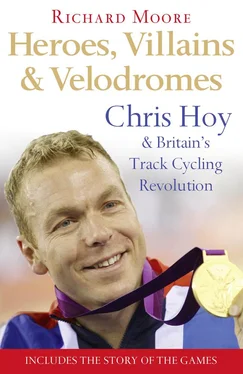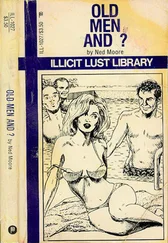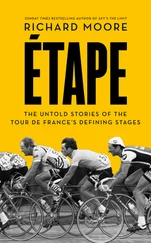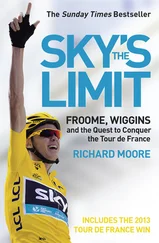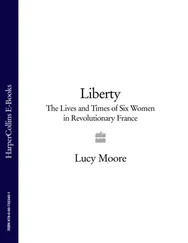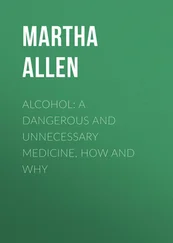Back in 1992, although Hoy had only just started riding on the track, he had actually been a competitive cyclist since the age of seven. Like so many children of the Eighties – he was born on 23 March 1976 – it was BMX-ing that provided the introduction.
The BMX bike was a child of the 1980s, just as Wham! or Grange Hill were. (Indeed, to emphasize how closely associated with the Eighties it was, the first official BMX race in Britain was staged in August 1980, and the international body set up in 1981.) But the sport was also treated as a child by the sporting authorities, being so far outside the mainstream that you would have thought it was a different sport: a BMX might as well have been a horse as far as cycling organizations were concerned. While thousands of kids competed up and down the country, and millions were inspired by the film BMX Bandits , not to mention the BMX chase scene in E.T. , the conservative bodies that ran cycling ignored it, and them.
It was E.T. that snared Hoy. As he told his school magazine in 2004: ‘I saw the film E.T. and became hooked on the BMX craze.’ The film’s famous BMX scene, with Elliot and friends smuggling E.T., wrapped in a blanket and sitting in a handlebar-mounted basket, epitomized the appeal of the BMX. The scene, in which the kids evade their adult pursuers, summed up what the BMX represented: namely, freedom and escape – escape from adults, that is.
The adults are made to look silly, relegated as they are to the role of car-imprisoned spectators while the kids flee over what looks suspiciously like a purpose-built BMX race track. And then, of course, comes the serious ‘air’ – they take off. It provides the most famous image from the film: BMXs being ridden by a gang of kids (accompanied by an extraterrestrial creature) into the night, silhouetted against the moon. ‘This video makes me wanna’ ride my BMX again,’ is one comment below ‘E.T. the chase scene’, which inevitably features on YouTube. ‘Anybody who says they don’t hum the theme [to E.T. ] while riding their bike is lying,’ says another. Absolutely.
But for Hoy it wasn’t all fun and games. The BMX racing scene was deadly serious and furiously competitive. So was he. ‘My first bike was one I got at a jumble sale,’ says Hoy, though his mother, Carol, corrects this. ‘ I got him his first BMX at a jumble sale,’ she says. ‘I’d gone on the bus, so I couldn’t take it home – I had to get a friend to put it in her boot. It cost £5, I think.’ Hoy remembers that the first bike was ‘stripped down by my dad, who sprayed it black and put BMX stickers and handlebars on it. I snapped the frame after a month or so, doing jumps off planks of wood on bricks. I then got another bike, which was a neighbour’s daughter’s old bike. My dad gave it the same spray treatment and put on the same bars. But I bent the frame of that one.’
When he started racing – ‘I was second in my first race,’ says Hoy – a better bike became a priority. He spotted the machine he wanted in the window of an Edinburgh bike shop: a black and gold Raleigh Super Burner. It cost £99. ‘Too much,’ said his mother. She explains: ‘I said, “When you’ve saved up half the money, your dad and I will pay the rest.” He did it in no time. He was very clever. If we had people round for dinner, then Christopher would come in to show face, and then he’d talk about his BMX-ing, and how well he was doing, and he’d say, “There’s a bike I want but I have to pay half myself …” and the uncles and aunts would feel sympathetic and slip him a fiver.’
‘I waited until they’d had a drink or two,’ reveals Hoy, with evident pride.
Hoy’s father, David, was a great supporter of his son’s first outings as a BMX racer with Edinburgh club Danderhall Wolves. ‘He had a great start in Scotland, but then we went on holiday to the south of England and all these kids turned up on their £500 bikes,’ says David. ‘Chris was still on his Raleigh Super Burner. He got hammered. He was really pissed off. I thought, well, if he’s going to be serious about this then he should be on a better bike. The Burner was a toy, really.’
With a serious bike – a ‘SilverFox’ – he decided to join a ‘serious’ team. David Hoy explains: ‘There was a shop in Edinburgh, Scotia BMX, which had a wee team which Chris joined, and they contested races all over the country – in England too. With Chris at first it was the case that the further he travelled the more he got beaten and the harder he worked.’
David says he wasn’t a pushy parent, just a supportive one. It would be difficult to imagine him as a pushy parent – his enthusiasm is tempered by a zen-like calm. ‘I learnt a lot about child psychology from travelling with him and seeing other kids and their parents,’ he muses. ‘The Italians were especially interesting. If their kids came over the line and they hadn’t won, they got beaten – literally. I didn’t think that was the way to get the best out of them.
‘I didn’t put any pressure on. BMX was just a wonderful sport for kids. He did the cycling bit and my hobby was to look after the bike. On a Wednesday night I’d have the bike on the kitchen table, stripped, bearings out, the works, and then rebuild it for the weekend. I always loved taking bikes to bits.’
Carol Hoy, a bubbly woman with a sparky sense of humour, was sanguine about the weekly transformation of the kitchen table into a workbench. ‘I just thought that it was a lovely thing for a father and son to do. They spent whole weekends together, travelling mainly, and I used to only get involved in the local races, when I did the catering. I made burgers – BMX burgers, I called them. I told them they’d make them go faster. They were very popular.’
George Swanson, whose son raced with Hoy, was the man in charge of the Scotia BMX team. ‘We must have been one of the most hated teams in the history of cycling,’ he laughs. ‘I mean, Christ, talk about parochial! We were accused of signing up all the good kids – cherry picking. We sponsored riders from all over Scotland – Craig MacLean was one of our riders – and we took them down south to race. But when they raced in Scotland they rode for their local track. The idea was not to concentrate on the Scottish scene but to venture further afield, set our sights a wee bit higher. We had a yellow Bedford minibus and every weekend we had them away racing: Preston, Crewe, Bristol, you name it.’
‘People used to say, “You’re mad, how can you possibly take a kid 1000 miles at the weekend?”’ says David Hoy. ‘But actually Chris used to get more sleep on a race weekend. If I was taking him, we had a big Citroen estate car. I had a bit of foam cut out, and we laid that in the back of the car. What happened then was that he’d go to bed at 8 p.m., just like normal, then I’d wake him at 1 a.m., and carry him into the car. He’d go back to sleep and sleep all the way, while I drove. The furthest we went in a day was Bristol. We’d get there about 6 o’clock on the Sunday morning and he’d go out and practise for a couple of hours – the other kids would have been practising on the track on the Saturday. He would race all day. Then we’d leave about five; stop for a meal; he’d get in the back and go to sleep – and when we got home I’d carry him up to bed. So he used to get two twelve-hour sleeps.’
‘I didn’t get any. I was usually pretty tired on a Monday,’ David adds.
Swanson is interesting on the young Hoy-as-competitor. ‘The Chris you see now is nothing like the Chris we saw back then,’ he says, smiling. ‘He seems very calm now, totally in control and great in the high-pressure situations, but back then there was a kid from Musselburgh [near Edinburgh] who put the fear of God into him.
Читать дальше
